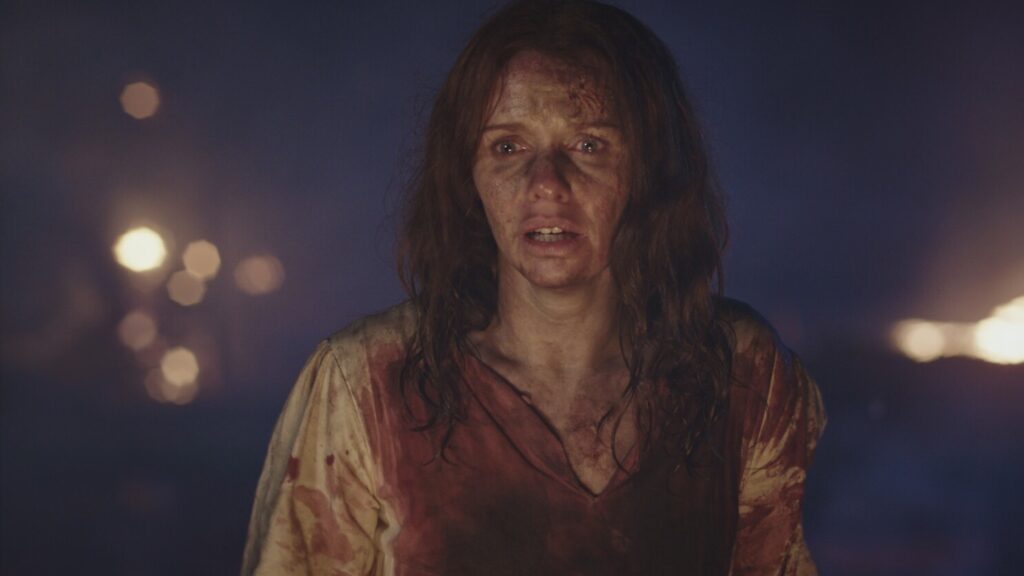The story of the golem is hundreds of years old, rooted in Jewish history and mysticism. The most famous story centers around Rabbi Loew of Prague, also known as the Maharal, who created a golem to protect his Jewish community from antisemitic attacks. The golem eventually must be destroyed because it grows too violent and unruly.
The Golem in Early Cinema
Fast-forward a couple hundred years, to 1914, and you get the first movie of Paul Wegener’s Golem trilogy, the third of which (from 1920) is the only survivor. Aside from a few television episodes, tabletop role-playing characters, and appearances in books, the golem has been a relatively minor character in recent Jewish culture. In early 2019, however, this changed with the release of Doron and Yoav Paz’s feature film The Golem.
Overview of The Golem (2019) Film
The recent movie opens on a gruesome scene in 17th century Prague, with bloodied bodies strewn about a shul (synagogue) and a rabbi, presumably the Maharal, trying to calm his golem and destroy it by taking the paper that gave it life out of its mouth. Of course, things don’t go as planned.
Setting and Protagonist in 17th Century Lithuania
We then cut to Lithuania in 1673, without getting a resolution to the golem problem of the past. The protagonist is Hannah, a rebellious woman, an orphan, wife to Benjamin, mother to the dead Joseph, and sister to Rebecca. Hannah spies on the men learning and gets Benjamin to sneak a book to her. This would be an intriguing plot in itself, but it is complicated by external pressure to have more children with inner resistance to the same idea, the Plague, and aggressive goyim (non-Jews).
Hannah’s Conflict and the Motherhood Narrative
By defining Hannah’s primary conflict as motherhood, she becomes boxed into the expectation of motherly plots: ensuring the welfare of her children and relegating all other concerns. In fact, the impetus for Hannah to act out and create a golem is her pregnant sister getting injured to the point of losing her fetus.
Antisemitism and the Creation of the Golem
At Rebecca’s wedding, she is punched in the stomach by a gentile, the group of whom don’t show up for a pogrom (antisemitic riot) but instead to blame the Jews for the Plague. After the wedding scene, we see Hannah advocate for the creation of a golem. The men disregard her, of course, because she doesn’t know what she’s talking about, especially considering that women couldn’t study Torah or the Kabbalah at that time. Benjamin is angry and embarrassed, and he forces her out of the shul. So Hannah goes to check on her sister, whose legs are covered in blood, which reveals that she was pregnant.
Feminist Themes in The Golem
Suggesting that the shtetl protects itself with a golem is obscene, but a woman having premarital sex isn’t even a minor conflict. Perhaps the writer, Ariel Cohen, wanted this to be another feminist take, but it didn’t ring true to me.
Representation of Judaism in the Film
A more important facet of the film that didn’t sit well with me was the Judaism all around. The creative team consisted of Jews, so it’s not like there was uninformed cultural appropriation going on, but the Judaism felt like a costume. Only certain traditions were seen or mentioned. I understand that any culture is far more complex than could ever be portrayed in an hour and thirty-five minutes, but I found it interesting what they left out. For example, music is played in the shul, a mitzvah shofar is blown outside of the appropriate days, no one says a brucha (prayer) before eating, and so on. Adding onto the shofar bit, there was a certain scene that felt sacrilegious. To an outsider, though, these details likely didn’t register as false.
Critique of Sensational Elements
There is also a lively sex scene, which I felt was gratuitous and unnecessary, and several heads explode throughout the movie, which seemed a bit excessive and uncalled-for as well.
Final Thoughts on The Golem (2019)
Overall, the Paz brothers’ film gave new life to the golem tale, but it lacked soul. While it provided us a new look at golems and tapped into the rich font of Jewish folklore, it also felt sensationalistic and insincere. The Golem (2019) isn’t a bad movie; it just didn’t work for me.
Where to Watch The Golem
I nonetheless encourage you to broaden your horror experiences and give it a try. You can find it streaming on Amazon Prime, Tubi, Roku, and other sources, or you can buy it on DVD and Blu-Ray from Epic Pictures.

